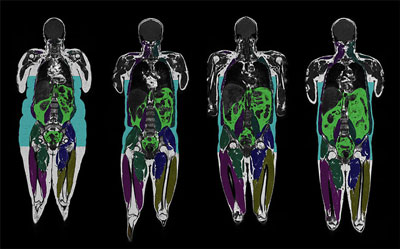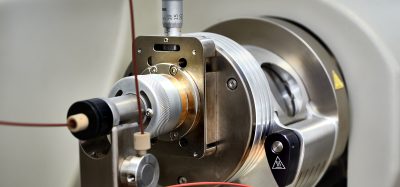AMRA and Pfizer team up for MR imaging project
Posted: 8 September 2015 | Victoria White
AMRA will collaborate with Pfizer to help provide a better understanding of the relationship between body composition and risk for obesity related diseases…


AMRA has entered into a unique international collaboration with Pfizer to investigate the relationship between fat and muscle distribution in the body and metabolic health, including risk factors for conditions such as obesity and diabetes.
The collaboration will assess fat and muscle measurements from magnetic resonance (MR) images in up to 7,000 subjects who are currently part of the UK Biobank registry. The objective of the collaboration is to help provide a better understanding of the relationship between body composition and risk for obesity related diseases, as well as a broader understanding of conditions linked to body composition.
“This collaboration has the potential to better understand the relationship between fat and muscle distribution and obesity related conditions such as diabetes, NASH and cardiovascular diseases,” said Tommy Johansson, Chief Executive Officer at AMRA. “As more data becomes available via collaborations such as ours, the research and medical community, will be better equipped to make decisions on how to improve and personalise treatments for individuals with obesity related diseases.”
AMRA’s technology allows for advanced phenotyping of subjects
The study will utilise AMRA’s body composition technology and analysis, the AMRA Profiler Research, which translates MRI scans into fat and muscle measurements via a cloud-based service. This enables data collection of MR images in only six minutes, which therefore, significantly reduces the cost of body composition analysis. In this cooperation, the AMRA Profiler Research delivers analysis of precise measures of abdominal fat distribution and thigh muscle volumes, ultimately allowing for advanced phenotyping of subjects.
“Obesity affects one in three children under the age of 11 in Europe, and over 60% of adults are classified as being overweight or obese,” said Professor Jimmy Bell, University of Westminster, London. “Body mass index and other measurements, such as waist circumference, are useful when categorising the amount of fat in a person’s body; however they do not provide specifics about fat distribution and very limited information on a person’s metabolic status or health risk. The potential impact of AMRA’s body composition measurement service and this collaboration is a much needed step forward in our understanding of many conditions that are increasing in the general population.”
Results from the collaboration will be analysed with the aim of identifying new and more specific biomarkers for chronic conditions where body composition plays an important role.
Collaboration may lead to new drugs to treat diseases associated with lipid overload
Morris Birnbaum, M.D., Ph.D., Senior Vice President and Chief Scientific Officer, Cardiovascular and Metabolic Disease Research, Pfizer, noted, “Obesity is often associated with the abnormal deposition of fat in tissues not designed for storage of lipids. Many current techniques to measure intracellular lipid can be cumbersome and expensive, which can limit their use in population studies and clinical trials. We hope that AMRA’s technology can help us in developing new drugs to treat diseases associated with lipid overload, such as non-alcoholic fatty liver disease, diabetic heart disease and insulin resistance syndromes.”
Dr Tim Peakman, Chief Executive Officer, UK Biobank, noted, “We are pleased to see the UK Biobank resource being used to help advance metabolic clinical understanding, hopefully prompting new and exciting areas of research. We are keen to take advantage of pioneering techniques that will allow us to get the best out of the data.”
Related topics
Imaging, Magnetic resonance images (MRI)
Related conditions
Diabetes, Heart disease







